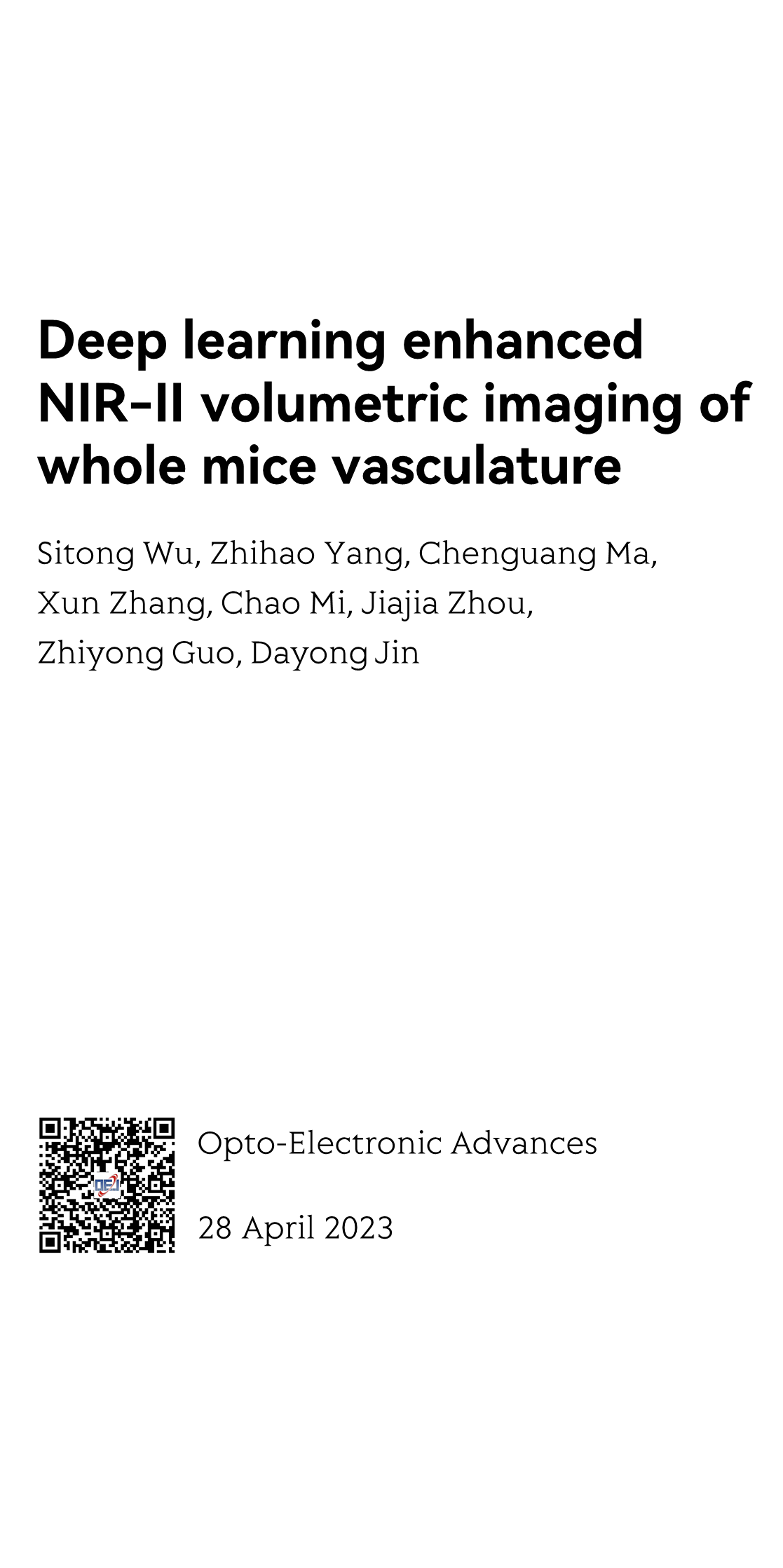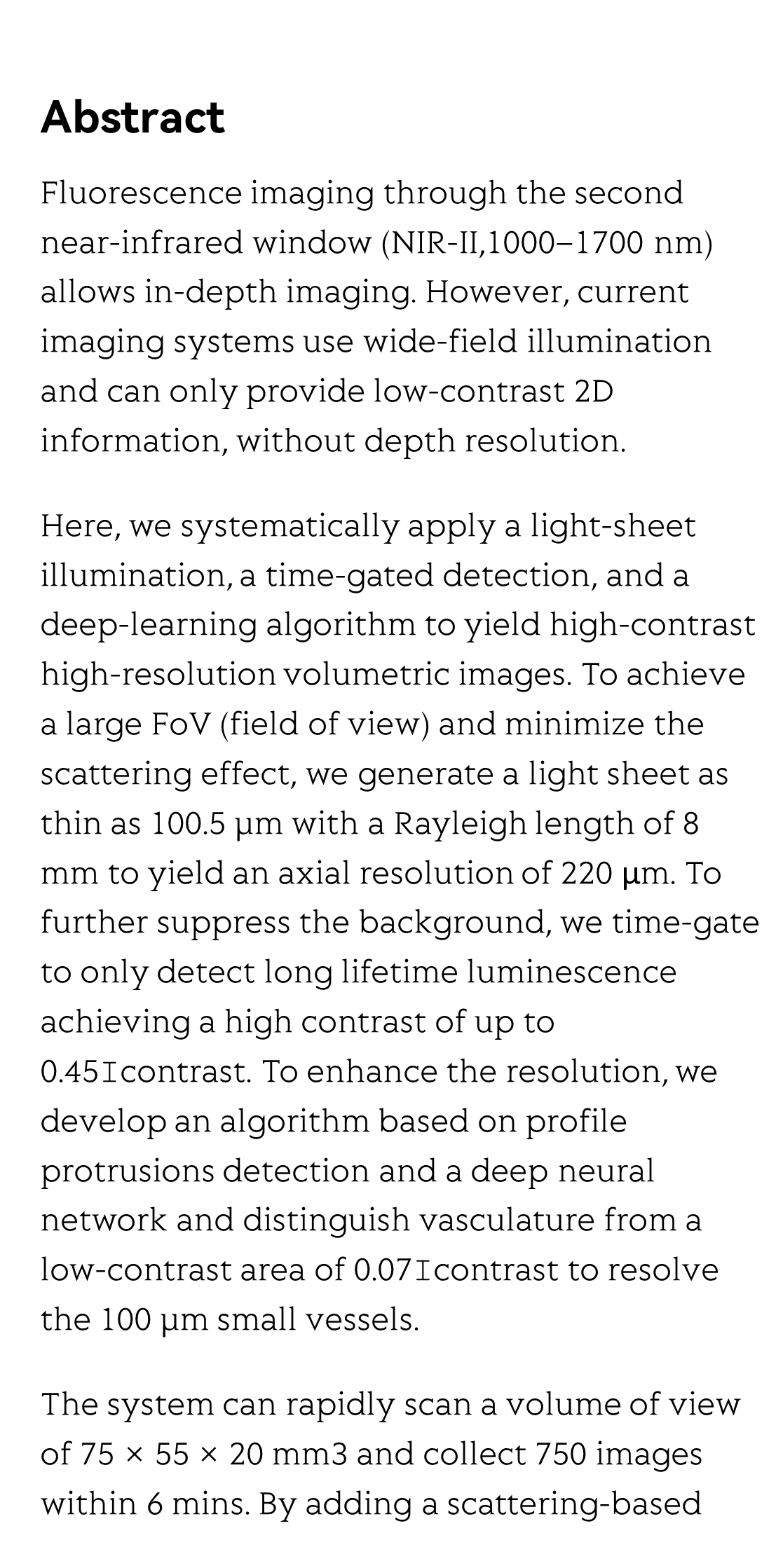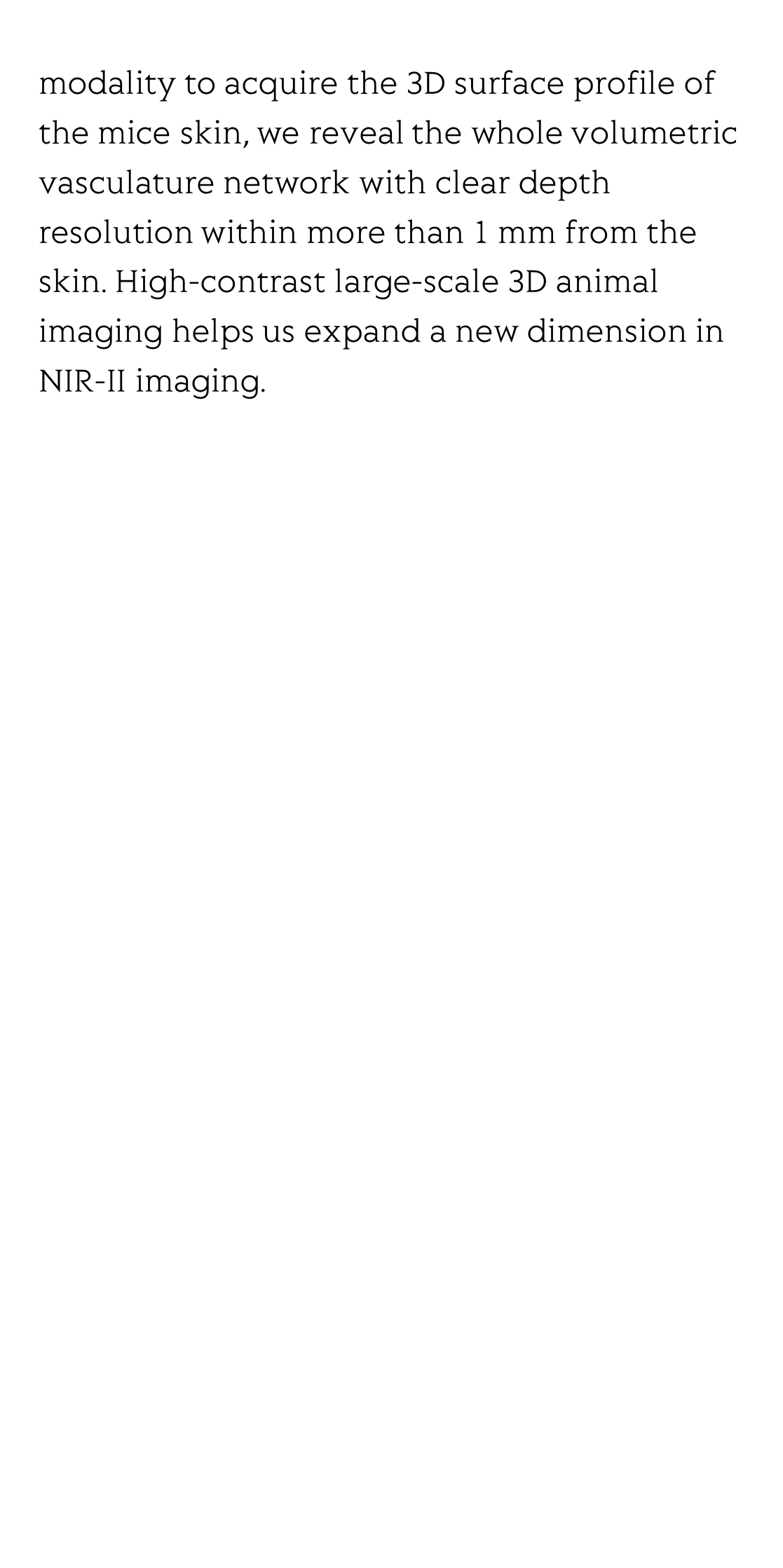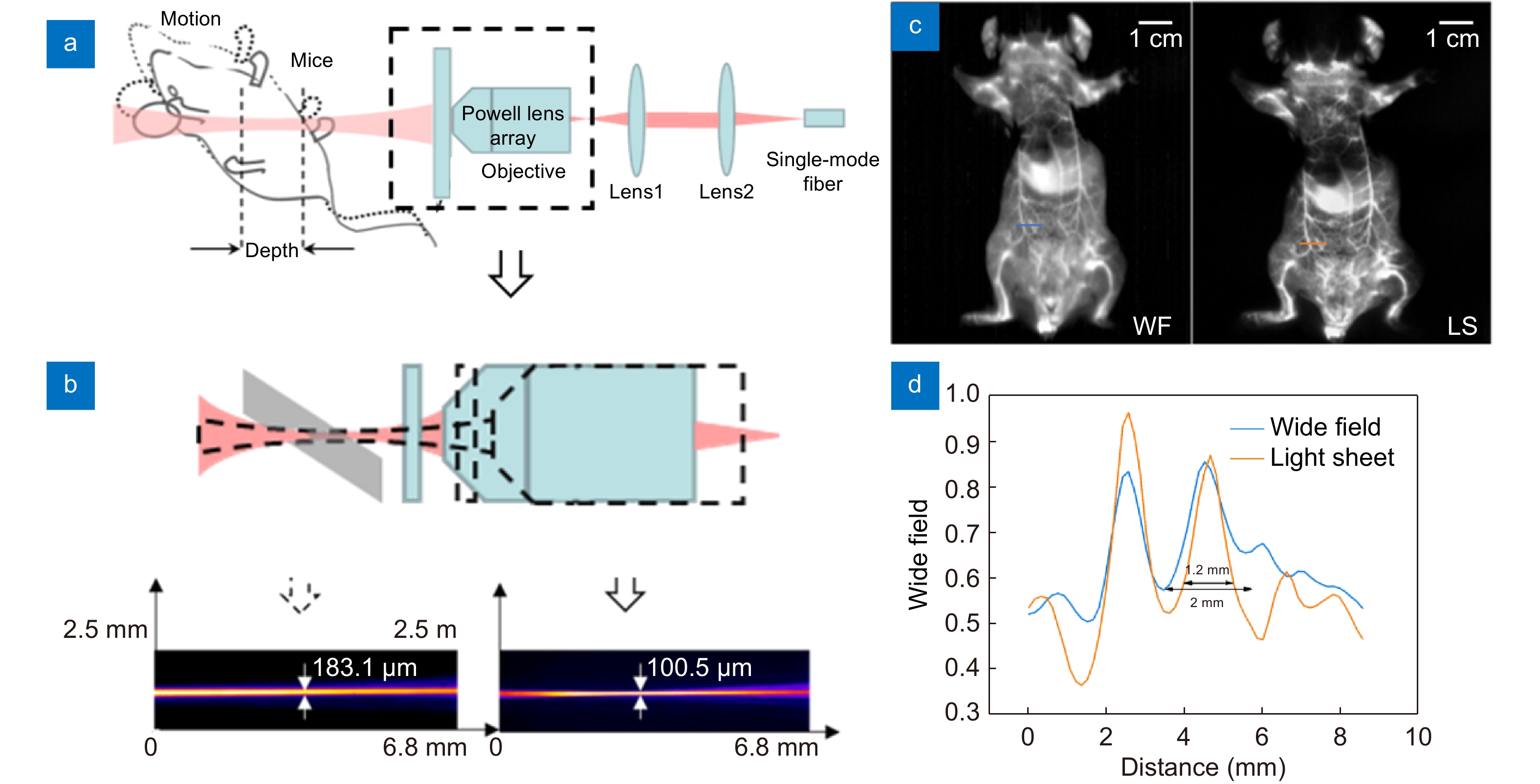(Peer-Reviewed) Deep learning enhanced NIR-II volumetric imaging of whole mice vasculature
Sitong Wu 吴丝桐 ¹ ², Zhichao Yang 杨志超 ¹ ², Chenguang Ma 马晨光 ¹, Xun Zhang 张勋 ¹, Chao Mi 米超 ¹, Jiajia Zhou 周佳佳 ², Zhiyong Guo 郭智勇 ¹ ³, Dayong Jin 金大勇 ¹ ² ³
¹ UTS-SUSTech Joint Research Centre for Biomedical Materials & Devices, Department of Biomedical Engineering, Southern University of Science and Technology, Shenzhen 518055, China
中国 深圳 南方科技大学生物医学工程系 南方科技大学-悉尼科技大学生物医学材料与仪器联合研究中心
² Institute for Biomedical Materials & Devices, Faculty of Science, University of Technology Sydney, Ultimo, New South Wales 2007, Australia
³ Guangdong Provincial Key Laboratory of Advanced Biomaterials, Southern University of Science and Technology, Shenzhen 518055, China
中国 深圳 南方科技大学 广东省先进生物材料重点实验室
Opto-Electronic Advances
, 2023-04-28
Abstract
Fluorescence imaging through the second near-infrared window (NIR-II,1000–1700 nm) allows in-depth imaging. However, current imaging systems use wide-field illumination and can only provide low-contrast 2D information, without depth resolution.
Here, we systematically apply a light-sheet illumination, a time-gated detection, and a deep-learning algorithm to yield high-contrast high-resolution volumetric images. To achieve a large FoV (field of view) and minimize the scattering effect, we generate a light sheet as thin as 100.5 μm with a Rayleigh length of 8 mm to yield an axial resolution of 220 µm. To further suppress the background, we time-gate to only detect long lifetime luminescence achieving a high contrast of up to 0.45Ιcontrast. To enhance the resolution, we develop an algorithm based on profile protrusions detection and a deep neural network and distinguish vasculature from a low-contrast area of 0.07Ιcontrast to resolve the 100 μm small vessels.
The system can rapidly scan a volume of view of 75 × 55 × 20 mm3 and collect 750 images within 6 mins. By adding a scattering-based modality to acquire the 3D surface profile of the mice skin, we reveal the whole volumetric vasculature network with clear depth resolution within more than 1 mm from the skin. High-contrast large-scale 3D animal imaging helps us expand a new dimension in NIR-II imaging.
Flicker minimization in power-saving displays enabled by measurement of difference in flexoelectric coefficients and displacement-current in positive dielectric anisotropy liquid crystals
Junho Jung, HaYoung Jung, GyuRi Choi, HanByeol Park, Sun-Mi Park, Ki-Sun Kwon, Heui-Seok Jin, Dong-Jin Lee, Hoon Jeong, JeongKi Park, Byeong Koo Kim, Seung Hee Lee, MinSu Kim
Opto-Electronic Advances
2025-09-25
Dual-frequency angular-multiplexed fringe projection profilometry with deep learning: breaking hardware limits for ultra-high-speed 3D imaging
Wenwu Chen, Yifan Liu, Shijie Feng, Wei Yin, Jiaming Qian, Yixuan Li, Hang Zhang, Maciej Trusiak, Malgorzata Kujawinska, Qian Chen, Chao Zuo
Opto-Electronic Advances
2025-09-25







